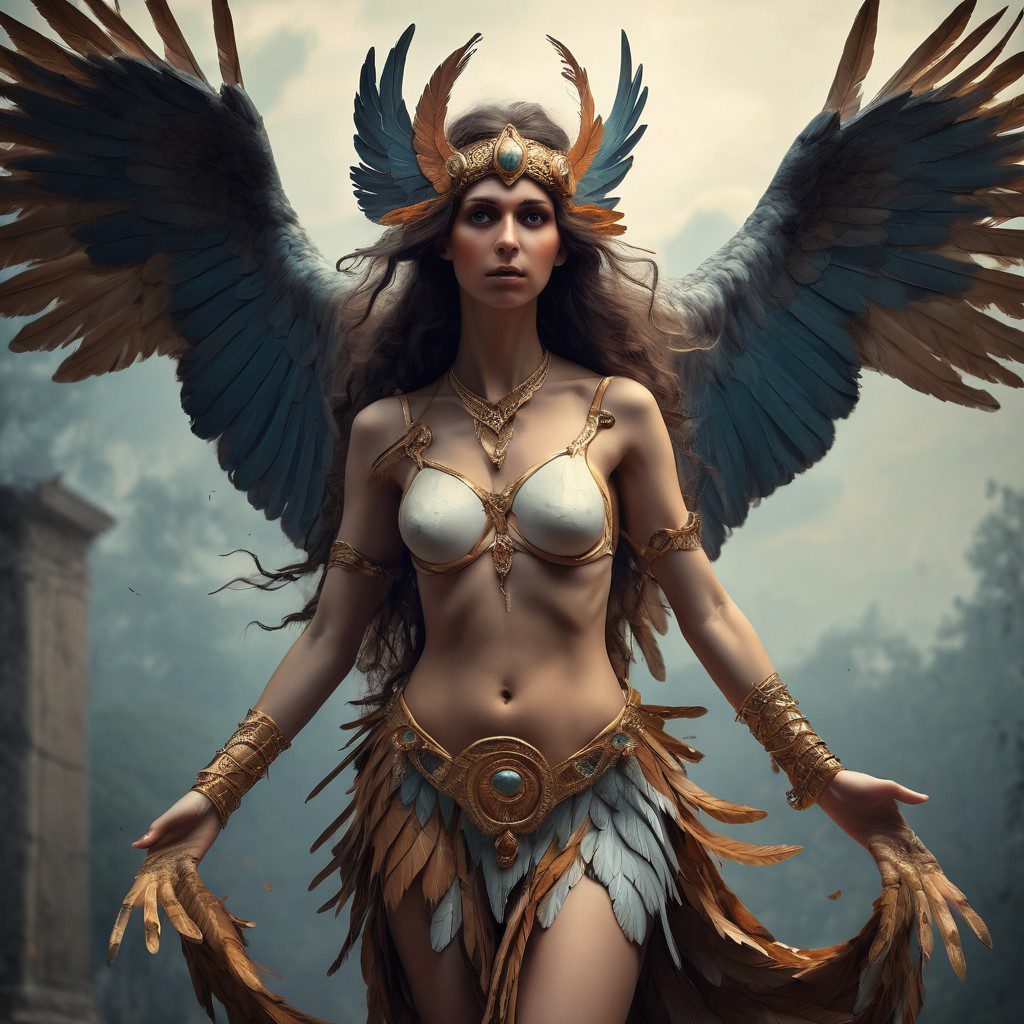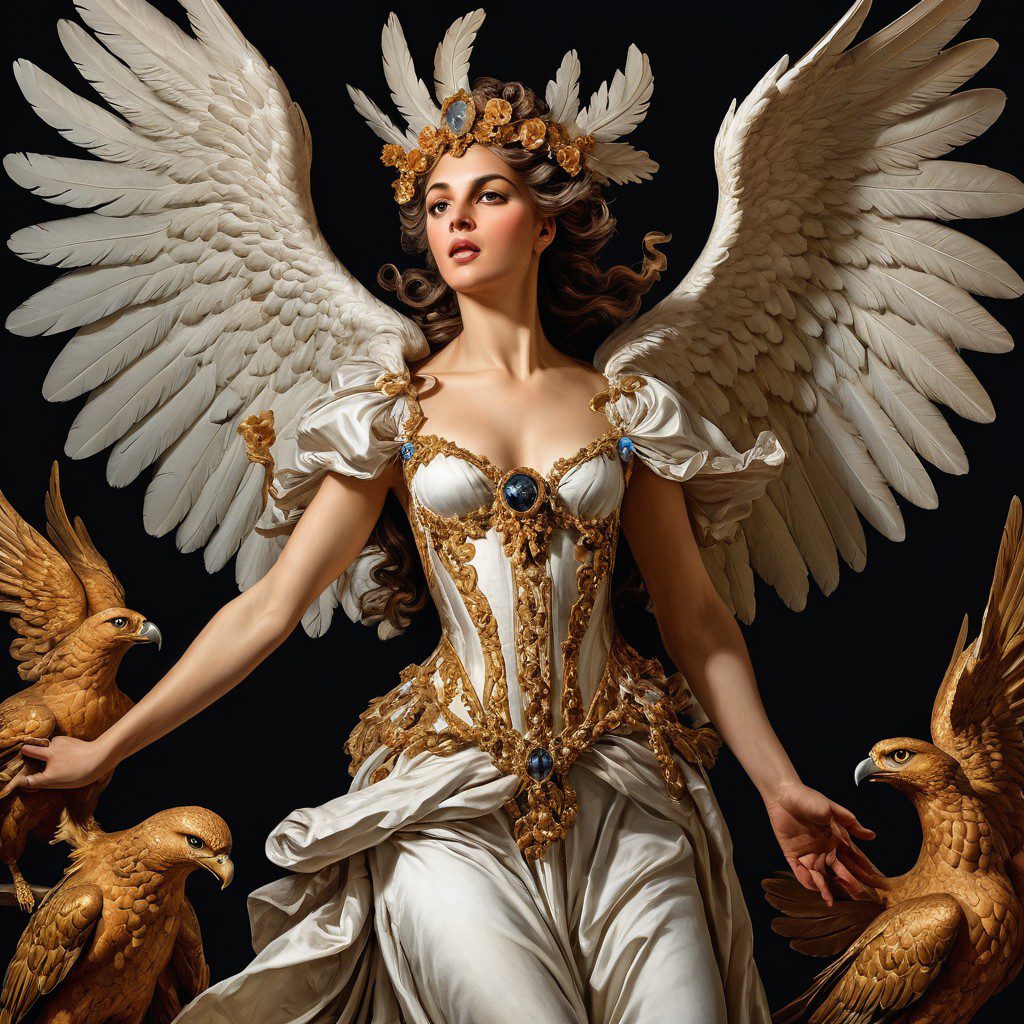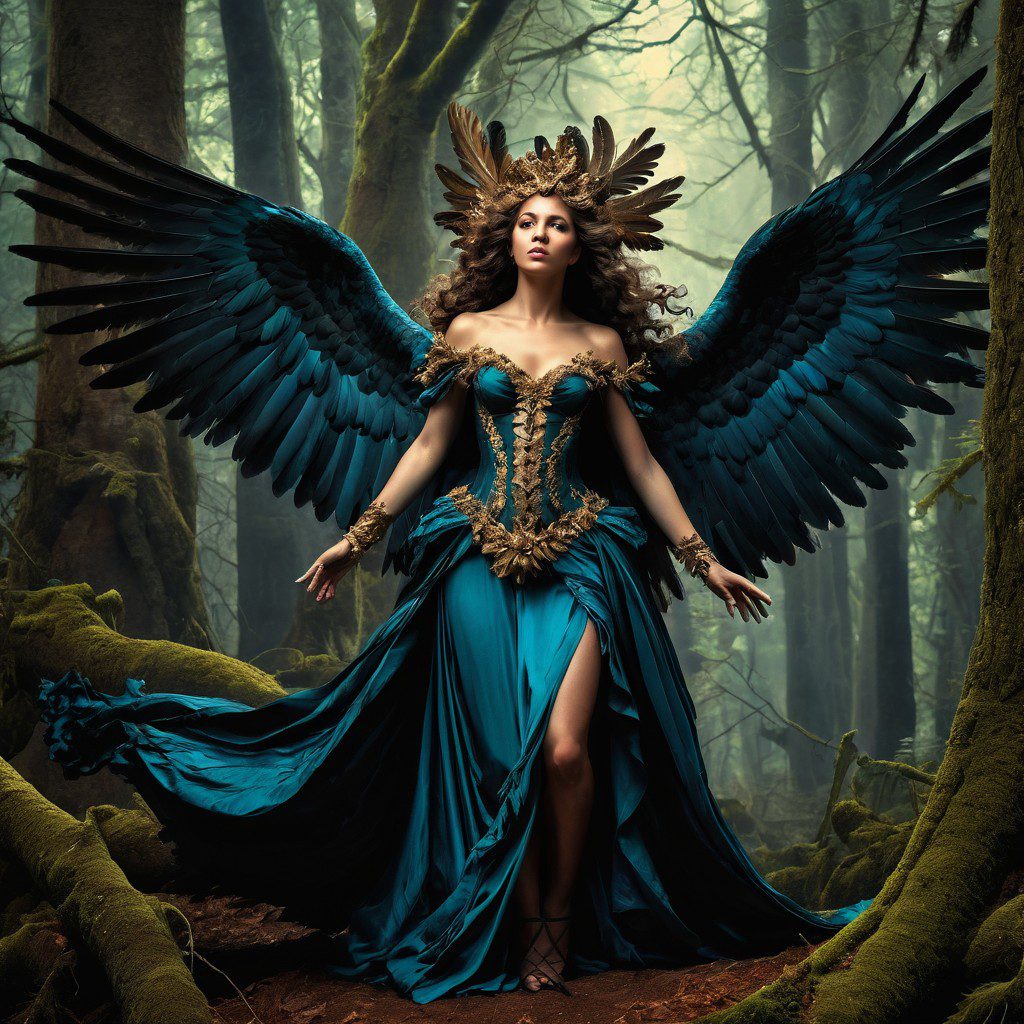The Harpy: Winged Spirits of Wrath and Retribution

The harpy, a fierce and fearsome creature from Greek mythology, is often depicted as a winged spirit, half-human and half-bird. Its name, derived from the Greek word harpazein, means “to snatch,” which perfectly encapsulates the role these creatures played in ancient myths. Often associated with the wrath of the gods, harpies served as divine agents of punishment, known for their cruelty and ruthlessness. Yet, despite their terrifying nature, the harpy’s place in mythology is multifaceted, representing not only vengeance but also the chaotic force of nature itself.
Origins and Cultural History
Harpies originally appeared in early Greek texts, including Homer’s Iliad, where they are described more as wind spirits than monstrous creatures. These early versions were swift agents of divine will, carrying souls to the afterlife. In Hesiod’s Theogony, they are named Aello and Ocypete, their swift movements being their primary characteristic, more akin to violent gusts of wind than demonic entities.
As their myth evolved, harpies took on a more sinister role. In later texts, such as Virgil’s Aeneid, they became repulsive, grotesque creatures with the body of a bird and the face of a hideous woman. This transformation reflected the increasingly negative associations with their role as agents of divine punishment.
Perhaps their most famous appearance is in the tale of King Phineus, as told in Apollonius of Rhodes’ Argonautica. Phineus, cursed by the gods for abusing his gift of prophecy, is tormented by harpies who continually steal and defile his food, leaving him in a state of eternal hunger. The harpies are eventually driven away by the Boreads, Zetes and Calais, but their role as relentless tormentors of the guilty was solidified by this tale.
Symbolism and Representation
The harpy became synonymous with retribution and divine punishment, especially for those who disrespected the gods. They also symbolized chaos and the destructive forces of nature, particularly the violent, unpredictable winds that could destroy crops or sink ships. In this way, harpies straddle the line between divine enforcers and manifestations of natural disaster.
Beyond their literal interpretation, harpies have also been understood as a metaphor for greed and the insatiable nature of desire. In Dante’s Divine Comedy, they appear in the seventh circle of hell, perched in a forest of suicide victims, tearing at the trees that represent these lost souls. Here, their destructive nature is linked to the souls’ inability to find peace, illustrating the harpy’s role as a symbol of suffering without end.
Harpies in Modern Media
The harpy’s terrifying image has maintained a strong presence in modern media, particularly in fantasy literature, video games, and film. Often, they are portrayed as grotesque, demonic creatures that act as antagonists or obstacles for heroes to overcome.


- Literature: In modern fantasy novels, harpies appear frequently, such as in the Percy Jackson and the Olympians series, where they take on a more comedic yet still threatening role. They work at Camp Half-Blood as enforcers of rules, punishing campers who break them, blending their classical role as tormentors with a modern, lighter touch.
- Video Games: Harpies are popular enemies in video games like The Witcher series and God of War. In The Witcher, harpies are aggressive monsters, attacking Geralt with vicious, high-speed aerial assaults. Their design leans heavily on the more monstrous interpretations, with talons and wings that make them formidable in battle. Similarly, in God of War, harpies are portrayed as relentless and menacing, attacking Kratos in swarms, reflecting their chaotic, destructive energy.
- Film and TV: Harpies are less common in mainstream films, though they appear occasionally in adaptations of Greek mythology. Some examples are Jason and the Argonauts (1963), The Last Unicorn (1982), the made for TV movie Harpies (2007): and both Hercules: The Legendary Journeys (1995-1999) & Xena: Warrior Princess (1995-2001)
Strengths and Weaknesses of the Harpy
Strengths:
- Relentless Pursuers: Harpies are known for their tenacity. Once they are sent to torment someone, they do not give up easily. This makes them a fearsome force of punishment.
- Flight and Speed: Their wings allow them to move swiftly, making escape nearly impossible. In some stories, they’re described as faster than the wind itself.
- Divine Connection: As agents of the gods, harpies are not easily thwarted by mortals. Their actions are often backed by divine will, giving them a near-invincible status against typical earthly powers.
Weaknesses:
- Fickle Allegiances: While harpies carry out divine punishment, they are not loyal to anyone but the gods. Heroes who have divine favor, like the Boreads in the story of Phineus, can easily drive them off.
- Physical Fragility: Despite their terrifying nature, harpies are often depicted as physically fragile. Their primary advantage is speed, not strength, meaning they can be overpowered by skilled warriors.
- Symbolic Limitations: In stories, harpies are often bound by their symbolic purpose. They serve the gods and only torment those deemed guilty. Once their task is complete, or if a higher divine authority intervenes, their influence fades.
The Enduring Legacy of the Harpy
The harpy’s long-standing presence in mythology and popular culture reflects a deep human fascination with the concept of divine retribution and chaos. They remind us of the forces in the world that cannot be controlled, representing both the wrath of the gods and the untamed power of nature. In modern portrayals, their terrifying nature is often amplified, yet they also serve as a reminder of the moral codes and divine laws that were so central to ancient worldviews.
Whether in ancient texts or modern games, harpies continue to embody the same message: those who defy the gods, or the natural order, do so at their peril.
